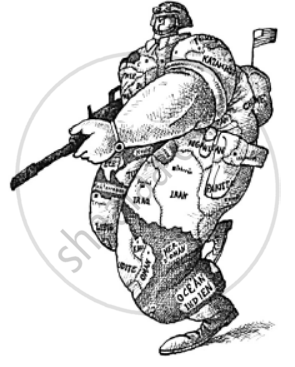Advertisements
Advertisements
प्रश्न
Which among the following developmental model had least supporters in India?
पर्याय
Mixed Model of Development
Bombay Plan
Capitalist Model of USA
Socialist Model of USSR
उत्तर
Capitalist Model of USA
Explanation:
The capitalist model of the United States had the fewest followers since India had suffered from colonialism and was fearful of an open and free market with no government rules.
APPEARS IN
संबंधित प्रश्न
What was Shock Therapy? Was this the best way to make a transition from communism to capitalism?
Shock Therapy is a phenomenon associated with ______
The term 'the largest garage sale in history' is associated with ______
Study the following diagram and answer accordingly.

What message does this cartoon give to the international community?
Read the following passage and answer accordingly.
Economist Jeffrey Sachs is widely associated with shock therapy. He developed a plan of shock therapy for post-communist Poland in 1990, for post-communist Russia in 1992, and several other countries, including Bolivia and Chile.
Bolivia, in particular, in 1985, had success as a result of shock therapy in ending a period of hyperinflation.
Poland also initially seemed to benefit from shock therapy as inflation was controlled, but it saw a sharp rise in unemployment that peaked at 16.9%.
Sachs did not like the term shock therapy, which he said was coined by the media and made the reform process sound more painful than it was.
In Russia, neo-liberal shock therapy did not produce favourable outcomes. Shock therapy was applied swiftly and in large scale, as opposed to how it was applied to other nations.
Almost all of Russia’s industries were undervalued and sold to private individuals and companies, with most acquired by a few Russian oligarchs.
With limited government intervention, most industries disappeared. The Russian currency declined, causing high inflation and the erosion of most citizens’ savings. Unemployment increased drastically, and government subsidies were removed, further pushing Russian families into poverty.
Which country benefited from Shock therapy in 1985?
Read the following passage and answer accordingly.
Economist Jeffrey Sachs is widely associated with shock therapy. He developed a plan of shock therapy for post-communist Poland in 1990, for post-communist Russia in 1992, and several other countries, including Bolivia and Chile.
Bolivia, in particular, in 1985, had success as a result of shock therapy in ending a period of hyperinflation.
Poland also initially seemed to benefit from shock therapy as inflation was controlled, but it saw a sharp rise in unemployment that peaked at 16.9%.
Sachs did not like the term shock therapy, which he said was coined by the media and made the reform process sound more painful than it was.
In Russia, neo-liberal shock therapy did not produce favourable outcomes. Shock therapy was applied swiftly and in large scale, as opposed to how it was applied to other nations.
Almost all of Russia’s industries were undervalued and sold to private individuals and companies, with most acquired by a few Russian oligarchs.
With limited government intervention, most industries disappeared. The Russian currency declined, causing high inflation and the erosion of most citizens’ savings. Unemployment increased drastically, and government subsidies were removed, further pushing Russian families into poverty.
What happened in Poland after the initial success of the shock therapy?
Match the following:
| (i) Mikhail Gorbachev | (1) Successor of the USSR |
| (ii) Shock Therapy | (2) Military Pact |
| (iii) Russin | (3) Introduced reforms |
| (iv) Boris Yeltsin | (4) Economic model |
| (v) Warsaw | (5) Present of Russia |
In the following statements, features that distinguish the Soviet economy from that of a capitalist country like the US are given. Choose which of these statements is/are true?
- There was an absence of unemployment in the Soviet Union.
- Land and productive assets were owned by the state only.
- Soviet Union industries produced every domestic product from pins to cars, whose quality might not match that of the west technology.
Shock Therapy is a phenomenon associated with ______.
